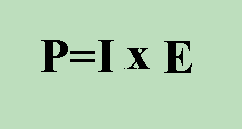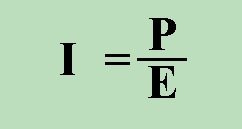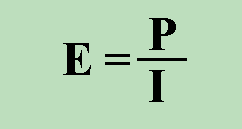


Pure Unadulterated Power
As discussed in a previous class, whenever a given current flows through a wire or device, it causes a form of electrical friction. We call this friction RESISTANCE. This friction is caused by the moving of electrons through and between molecules within the resistor. This friction causes 2 other effects: Heat and Noise. The noise is called Johnson noise, and for now, we will ignore this effect, as it is very negligible. The speed, or rate at which the heat is generated defines the power that the resistor consumes. This power consumption represents a loss, because we do not make use of the heat that is dissipated. It becomes important to know how much power a resistor is dissipating, because it will burn up if it can not withstand the heat. For this reason, resistors have both a resistance rating in Ohms, and a power rating in Watts. A resistor which is rated at 2 watts can safely dissipate 2 watts. If a 2 watt resistor is forced to dissipate 5 watts, it will burn up, and its resistance value will change accordingly.  The question then arises, "How do we calculate the amount of power dissipated
by a resistor?"
The question then arises, "How do we calculate the amount of power dissipated
by a resistor?"
I Thought you'd never ask! The formula for power is not unlike Ohm's Law. As a matter of fact, it is called Ohm's Watts Law. And remembering the formula for Power is a piece of pie! (Don't I mean a piece of cake?) Nope.... PIE! You see, Power (P) is equal to the product of the Current (I), and the Voltage (E) in a given circuit. 
 and
and

|
[COURSE INDEX] [ELECTRONICS GLOSSARY] [HOME]
| Otherwise - please click to visit an advertiser so they know you saw their ad! |
